Naval ships broken at Wards 1971
| < 1965-1970 | Δ Index | post 1971 > |
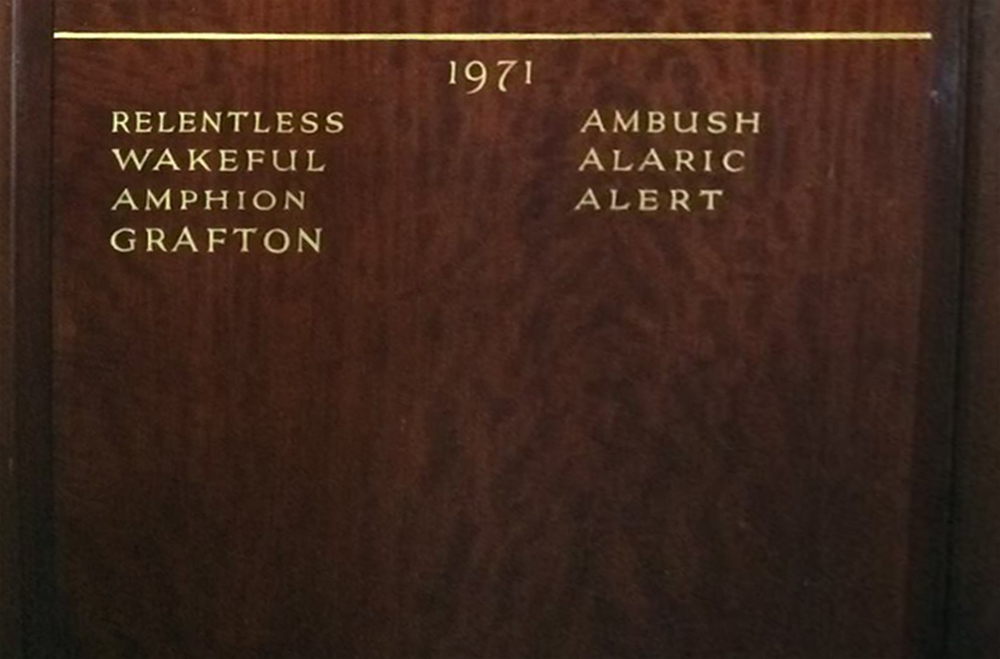
1971
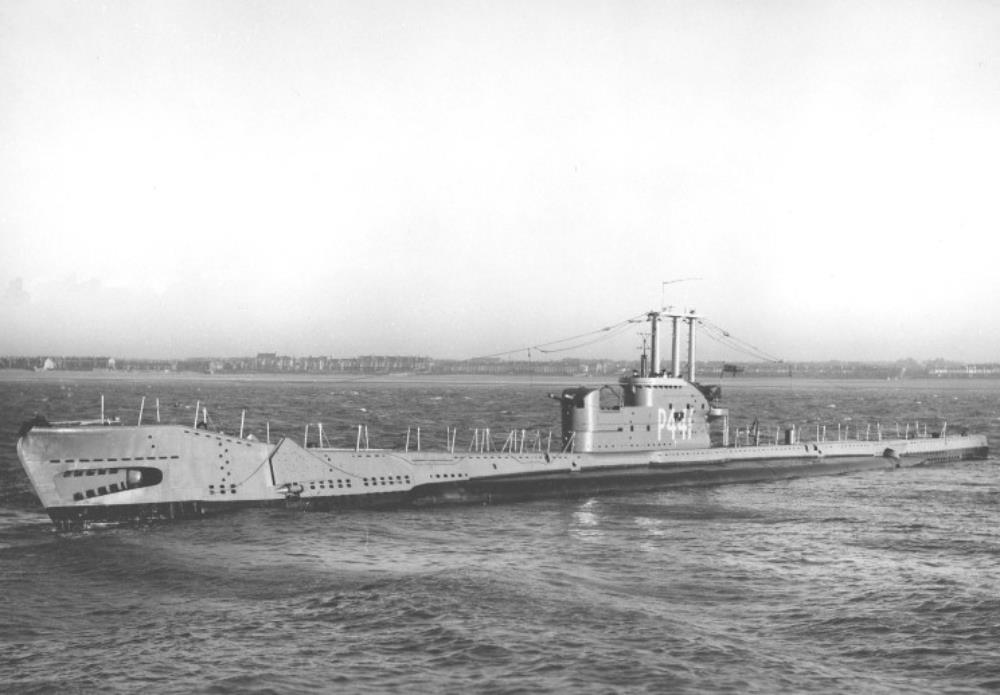 HMS Alaric
HMS Alaric
HMS Alaric – an Amphion-class submarine, built by Cammell Laird, Birkenhead, launched 18th February 1946, commissioned 11th December 1946.
Alaric served on the home station all her life and was modernised in the 1960s. In 1968 she was part of the First Submarine Squadron based at HMS Dolphin and took part in Navy Days at Portsmouth during that year.
Sold to be broken up for scrap on 24 June 1971; Scrapped at Inverkeithing in July 1971
 HMS Alert
HMS Alert
HMS Alert – a Bay-class frigate, built by Blyth Dry Dock Company, Blyth, Northumberland, launched 10 July 1945, commissioned October 1946.
Joined the British Pacific Fleet and spent the next 18 years visiting ports in China, Japan, Malaya, Vietnam, Borneo, and the Philippines, she was deployed operationally during the Malayan Emergency.
In late 1951 Alert was deployed with United Nations Task Group to carry out naval fire support operations off the west coast of Korea.
In October 1952 she sailed to Western Australia to take part in the first British atom bomb test. In April 1957 she sailed to Christmas Island as part of Britain’s first thermonuclear bomb tests.
In December 1962 Alert was deployed operationally as HQ ship at Brunei after the start of the Indonesia–Malaysia .
Alert finally returned to the UK, in 1964, and was laid up in the Reserve Fleet. In 1971 she was sold Thos W Ward arriving Inverkeithing in October1971
www.naval-history.net had her detailed service history.
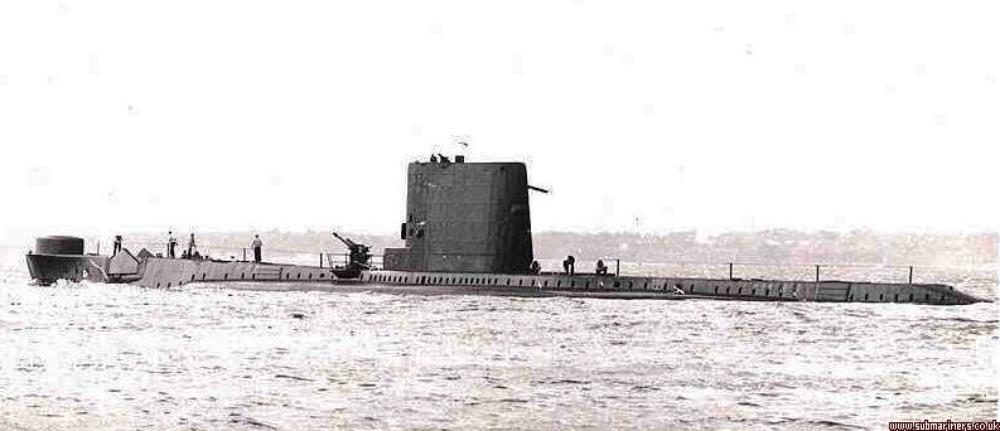 HMS Ambush
HMS Ambush
HMS Ambush – an Amphion-class submarine, built by Vickers Armstrong, Barrow-in-Furness, launched 24th September 1945, commissioned 22nd July 1947. Ambush joined the 3rd Submarine Flotilla based at Rothesay, Scotland.
The early post-war years saw the Royal Navy introduce the submarine snorkel (known as the Snort in British service). Ambush set out from Rothesay on 10 February 1948 on an extended submerged cruise in Arctic waters between Jan Mayen and Bear Island. The submarine encountered a severe storm, which forced Ambush to the surface as she could not maintain depth control well enough to use the snort, returning to base on 18 March.
Ambush joined the 10 Submarine Flotilla based at Singapore in November 1959 and remained based in the Far East until 25 July 1967.
Following decommissioning, she was sold to Thos W Ward and arrived at Inverkeithing for breaking up on 5th July 1971
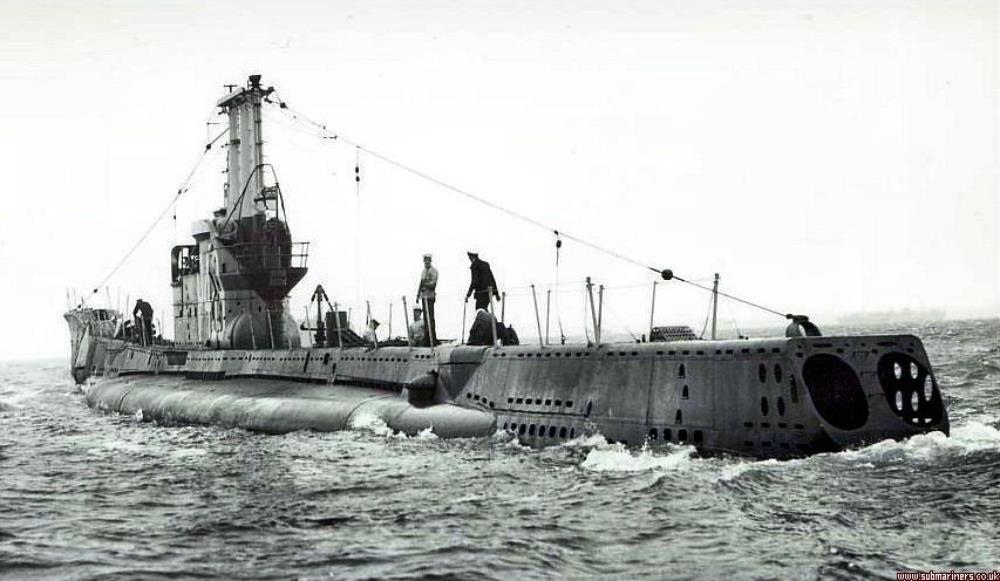 HMS Amphion
HMS Amphion
HMS Amphion – an Amphion-class submarine, built by Vickers Armstrong, Barrow-in-Furness, launched 31st August 1944, commissioned 27th March 1945.
During the 1960 was refitted with a 4″ gun for service in the Far East during the Indonesian troubles.
Sold to be broken up for scrap on 24 June 1971. Scrapped at Inverkeithing in July 1971.
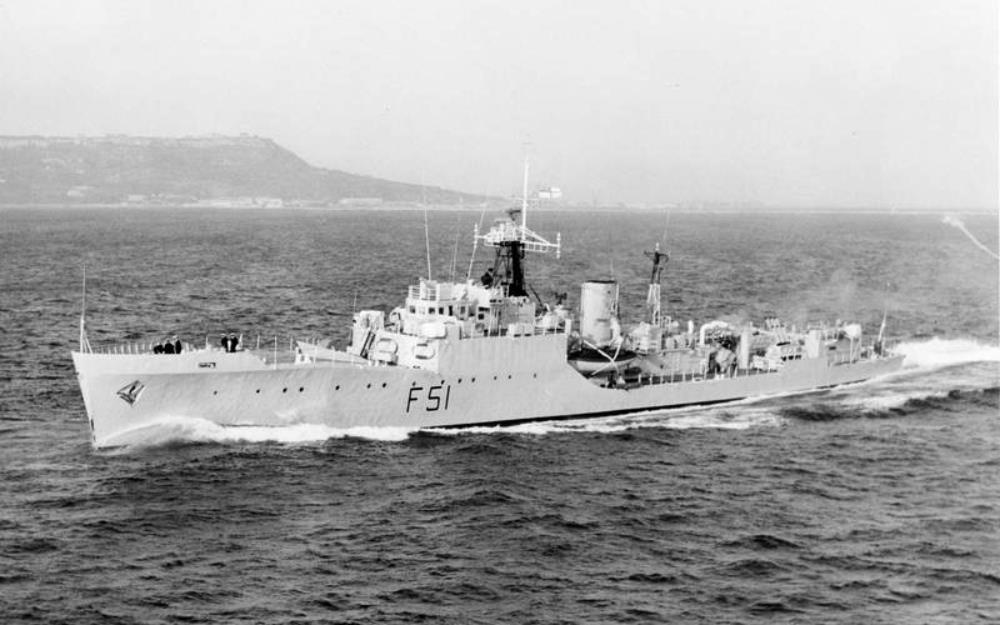 HMS Grafton
HMS Grafton
HMS Grafton – a Blackwood class (Type 14) frigate built by JS White and Co Ltd, Cowes, launched 13th February 1954, commissioned 8th January 1957.
One of a dozen Blackwood-class frigates built in the 1950s, she served with the 2nd Frigate Squadron based at Portland Harbour until March 1963, when she started a refit at Portsmouth Dockyard. She then joined the 20th Frigate Squadron based at Londonderry Port in Northern Ireland, until April 1969, when she was paid off.
She was scrapped at Inverkeithing in 1971
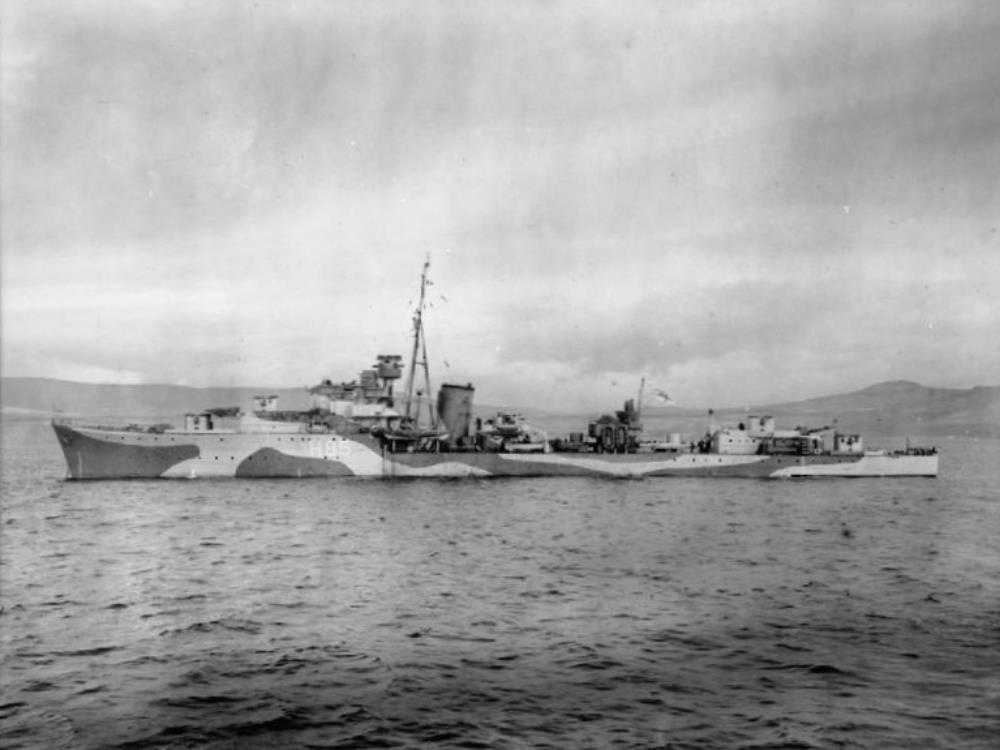 HMS Relentless
HMS Relentless
HMS Relentless – an R-class destroyer, built by John Brown & Company, Clydebank, launched 15th July 1942, commissioned 30th November 1942.
Out of service: Reserve Fleet – November 1947. Reinstated: 1952. Converted to Type 15 frigate
From November 1942 Relentless performed anti-submarine escort duties and patrolling activities in the South Atlantic and Indian Ocean for the balance of the war. From 1946 until 1949 she was held in reserve. From 1949 until 1951 she underwent conversion to a Type 15 Anti-Submarine Frigate.
From October 1956 until 1964 she was held in reserve at Gareloch, Chatham and Rosyth. On 27 June 1964 she was re-commissioned to serve as part of the 29th Escort Squadron, to replace the destroyer Diana. Finally was placed on the disposal list in August 1965 and sold to Thos W Ward for scrapping at Inverkeithing in 1971.
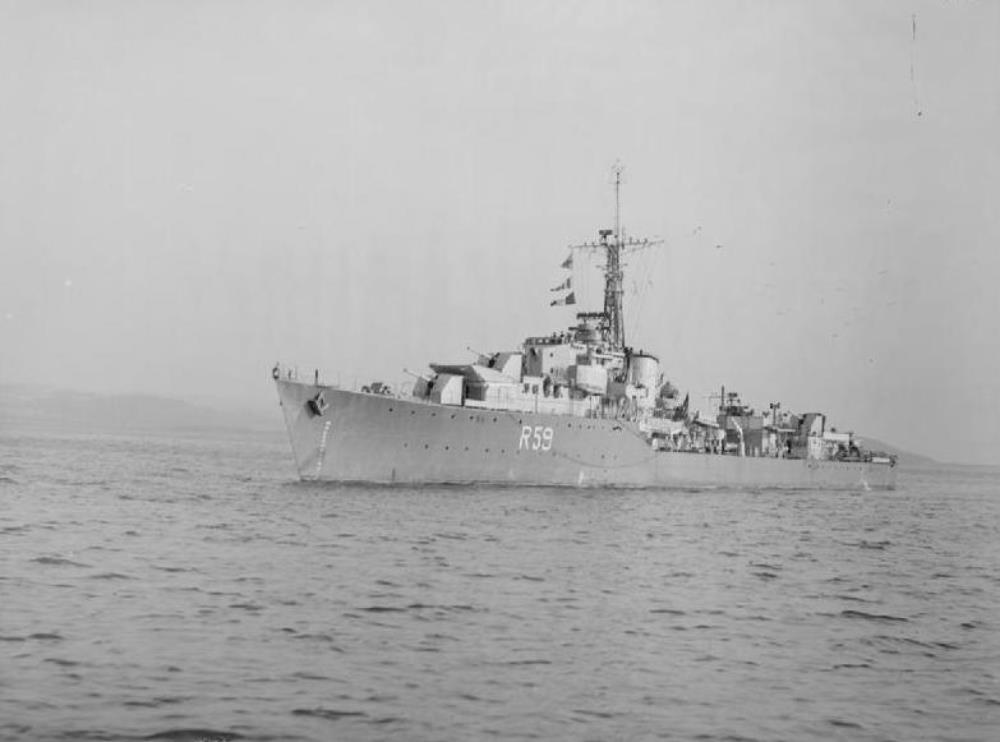 HMS Wakeful
HMS Wakeful
HMS Wakeful – a Type-W destroyer, built by Fairfield Shipbuilding and Engineering Company, Govan, Scotland, launched 30th June 1943, commissioned 17th February 1944.
Wakeful entered active service with the Home Fleet in March1944. She was as an escort vessel during the air raids on the German battleship Tirpitz in Altenfjord, and air attacks on German shipping off Narvik and Stadlandet, Norway.
In mid-1944 she was refitted for operations in the Indian Ocean including air attacks on the Nicobar Islands during the amphibious assault of Leyte. In January 1945 she was as an escort during air attacks on refineries at Pladjoe, and air raids on Soengi-Gerong. During August 1945 Wakeful was on escort duties during the air raids on Hokkaido and North Honshū. She was in Tokyo Bay for the formal surrender and helped with the repatriation of allied nationals before returning to the UK.
Post war, Wakeful was used as a Boys’ Training ship until she was converted to a Type 15 anti-submarine warfare frigate by Scotts Shipbuilding and Engineering Company between 1951 and 1953.
She served in the Mediterranean until 1957, taking part in the assault on Port Said to take control of the Suez Canal. On 25 February 1960 she was used for the burial at sea of Edwina Mountbatten, Countess Mountbatten of Burma.
Between 1966 and 1967 she was fitted with experimental satellite communication equipment and stabilisers for trials. On 31 October 1967 she escorted the RMS Queen Mary out of Southampton on her final voyage to Long Beach for retirement. She went up the Ouisterham Canal for the 25th Anniversary of D Day in June 1969.
In 1970 she was put on the Disposal List, and was sold to Thos W Ward for scrapping arriving at Inverkeithing for demolition on 5 July 1971
| < 1965-1970 | Δ Index | post 1971 > |